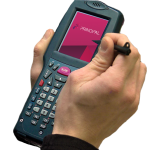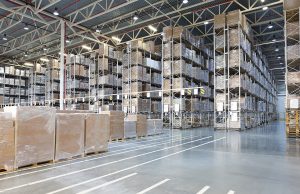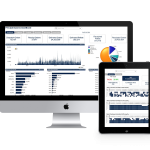

Voice technology is a great addition to any warehouse, most notably in picking operations. It allows pickers to have their hands free while receiving work instructions. In theory it increases the pickers work rate. Well that’s not totally true, there are several things you need to do first.
Does the Following Ring True in Your Warehouse Operation?
 Consider a warehouse where you have a normal case pick operation and you’re using a wireless hand-held device (RDT/HHT) to do this, or even a sheet of paper. The picker looks at the device, or sheet of paper, and moves to the next item on the pick sheet. They get the required item(s) and either scan a location, product barcode or they check off the item on the sheet of paper and move on.
Consider a warehouse where you have a normal case pick operation and you’re using a wireless hand-held device (RDT/HHT) to do this, or even a sheet of paper. The picker looks at the device, or sheet of paper, and moves to the next item on the pick sheet. They get the required item(s) and either scan a location, product barcode or they check off the item on the sheet of paper and move on.
The time taken between these items is what we call the “Action Elapsed Time” (AET). It’s the time you lose between each action. And, we call the time you lose in total between one pick face to the next the “Task Elapsed Time” (TET).
Both AET and TET are relevant and are inextricably linked. The aim with voice is to first reduce your AET. For example, the actions would be:
Each of these steps takes time, and with both paper and RDT technology you perform these steps sequentially.
With voice, you are receiving your next instruction while moving to the next location. You are confirming what you are taking as you’re picking the items and so on. You are now receiving and performing instructions concurrently, hence the performance improvement.
So What’s the Catch?
There’s always one! With a dedicated voice unit you don’t’ have the luxury, or the ability, of visually seeing the list of items as you do with a wireless hand held device (RDT/HHT) or even a sheet of paper. You are getting the next instruction in your ear.
During the current pick operation, what if, you are unaware that the pickers are not actually picking in sequence? (For example, because they know from experience that product ‘X’ must be stacked on top of product ‘B’ or that the lower quantity items should go last, etc.). Often pickers visually scan, or scroll up and down a RDT/HHT to make their next selection. While doing so standing still continuously increases the AET.
Simply deploying voice technology, in such a common scenario, can erode the efficiency gains and causes huge picker frustrations as the operator cannot see a visual representation of the entire pick (As they could on RDT/HHT or with a traditional sheet of paper). This results in the picker building the wrong pallet sequence or having to request “skips” throughout the process.
So, before you deploy a voice picking solution, we suggest that you review and analyse your current operation. Obtain detailed Key Performance Indicators (KPIs) about your workforce picking sequences and habits.
How we Helped a Client Migrate to Voice Picking
One of our customers was migrating from RDT/HHT to voice. We used our KPI functionality to track the pick movements using operator heat maps – how many times they did not take the first item presented to them on the RDT/HHT.
 We then used the KPI data to analyse, and physically remap, the warehouse using criss-cross pick bays in stack sequence, leaving less popular items to the end of the sequence, etc. After a time, we had very few first presented items not being used. We then restricted the operators on the RDT/HHT so they could only see the first item (They would have to press a skip button to move on). It was when we had almost zero, or very few skips, that we introduced voice and then all benefits of concurrent actions and reduced AET and TET were realised. This approach, combined with voice technology, increased the picker performance by an impressive and measurable 31%.
We then used the KPI data to analyse, and physically remap, the warehouse using criss-cross pick bays in stack sequence, leaving less popular items to the end of the sequence, etc. After a time, we had very few first presented items not being used. We then restricted the operators on the RDT/HHT so they could only see the first item (They would have to press a skip button to move on). It was when we had almost zero, or very few skips, that we introduced voice and then all benefits of concurrent actions and reduced AET and TET were realised. This approach, combined with voice technology, increased the picker performance by an impressive and measurable 31%.
We advise that the benefits of voice technology are not automatic, and also that deploying voice to an existing work process can prove to be counter-productive. However, with KPI’s, along with careful analysis, the benefits can surpass expectations and greatly improve return on investment.

We love to develop innovative solutions that improve on our client’s operations and ultimately their ROI. If you are experiencing Warehousing or Supply Chain operation issues or bottlenecks – or just need improvements to stay ahead of the competition – then ASK US HOW TODAY.